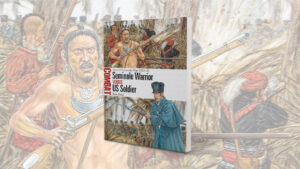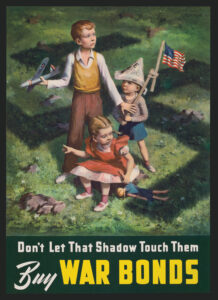MANY SLANG TERMS from World War II referred to animals. The name of the Allies’ principal opponent in the war, the Axis, was first used in 1936 for Italy and Germany, and later Japan was included as well. According to lexicographer Paul Dickson, it gave rise to such slang terms as Axis rat, Axis snake, and Axis water moccasin, all applied to the German submarine during the height of its attacks on Allied shipping.
German field marshal Erwin Rommel [see “Drive to Nowhere,” this issue] was nicknamed the Desert Fox for his clever campaigns in Africa. Britain’s 7th Armored Division, which also fought in North Africa, was dubbed the Desert Rats. Its divisional sign was a desert rat called a jerboa, whose tactics of scurrying and biting the 7th Division’s tankers adopted with considerable success: They fought in Libya and then took part in the Normandy invasion, fighting all the way to Berlin.
The goosestep was not a new term but became widely known throughout World War II. This marching step, which resembles the stiff-legged walk of geese, had been used by the German military from the time of Frederick the Great. It was also used in Britain from about 1800 and adopted by many countries as a marking-time exercise in military calisthenics. But in the 1930s it became closely associated with the troops of Adolf Hitler and Benito Mussolini, probably because newsreels frequently showed them goosestepping. Ever since, it has been linked with fascism and blind obedience to authority.
The chicken figured prominently in World War II slang. The most opprobrious of these terms was chicken shit, applied to overly fussy regulations, make-work chores, and pettiness. Poet and etymologist John Ciardi suggested it alluded to the endless work of shoveling up droppings on a chicken farm. It is now often used to denote cowardly behavior as well.
Less demeaning usages of the bird’s name were chicken colonel, or bird colonel, a full colonel as opposed to a lieutenant colonel, and so called for that officer’s spread-eagle insignia. Chicken food or chicken feed was an intelligence term for fake information distributed to mislead Axis agents. The term probably came from its civilian usage for small change or a trivial amount of money.
The Liberty ship, built in great numbers during the war, was nicknamed ugly duckling for its unattractive appearance. The term Donald Duck was applied to a duplex drive (DD) Sherman tank, which had a flotation collar and two propellers to make it amphibious. Donald Ducks were used to great effect during the Normandy landings. The same term was used in the navy for a loudspeaker, because its sound resembled that of the cartoon character.
Yard bird was a term with varied meanings, although most often it signified a rookie or new recruit. In the navy, however, a yard bird was someone stationed at a navy yard or, spoken contemptuously, a civilian employee of a navy yard. Today the phrase most often refers to a convict.
A German antipersonnel bomb was called a butterfly bomb. As it fell, its casing opened to form two “wings,” slowing its descent so it would explode in the air.
Finally, there was mouseholing, which meant blowing a hole in the connecting wall between buildings with a small explosive charge called a beehive, tossing a couple of grenades through the hole, and then stepping through it with a Sten submachine gun on full automatic to deal with any survivors.
Christine Ammer has written dozens of wordbooks, including Facts on File Dictionary of Clichés, 3rd edition.





